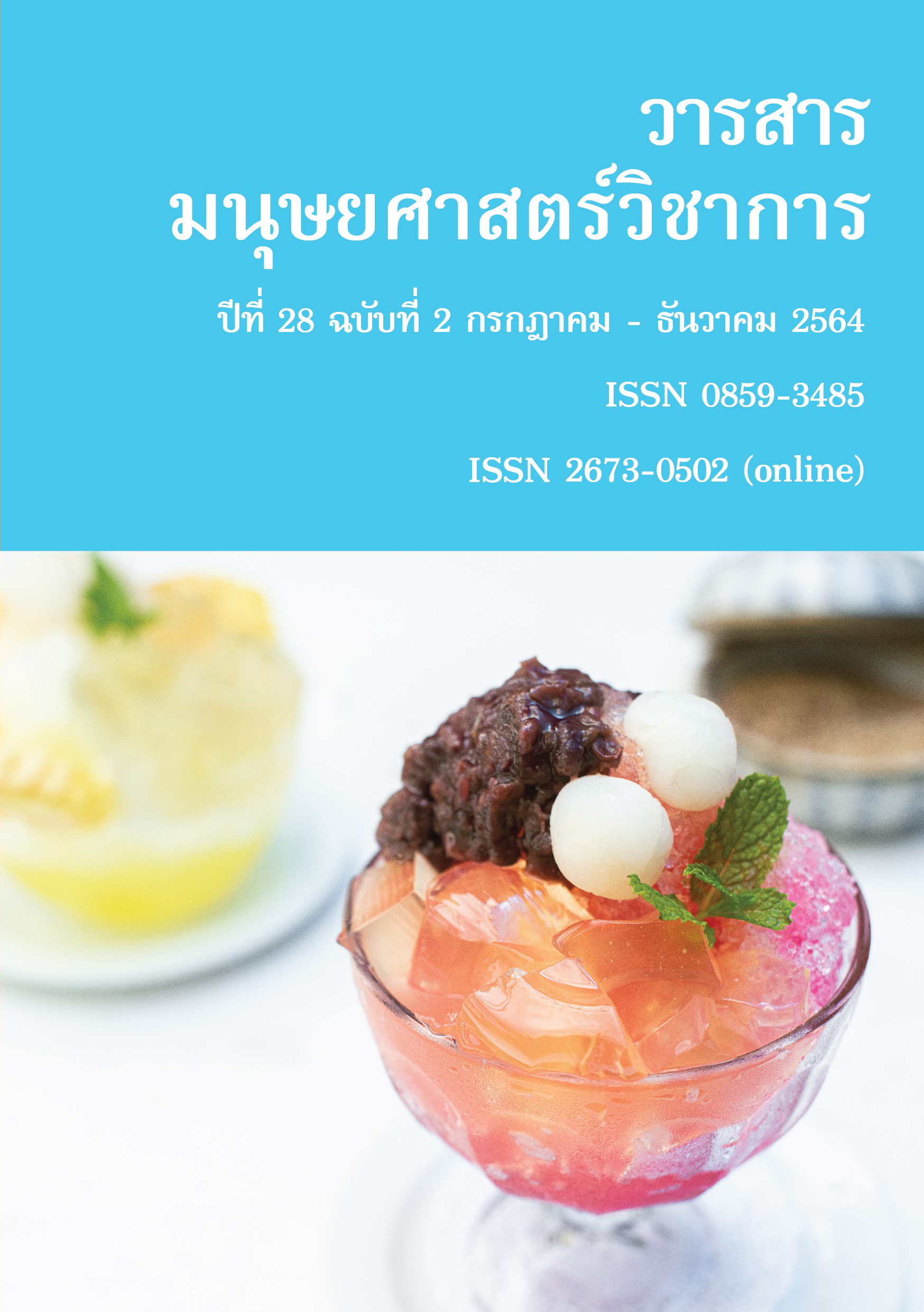The Discourse of Prostitution and Sexual Conduct in The Royal Institute Dictionary of New Words
Main Article Content
Abstract
The aim of the research was to apply a critical discourse analysis approach (CDA) to an examination of the relationship between the linguistic devices and the ideology of prostitution and sexual conduct discourse in Thai society as evinced in example sentences in The Royal Institute Dictionary of New Words, volumes 1-2. The research objectives were 1) to analyse the linguistic features that went into foming sets of ideas and 2) discourse practices and socio-cultural practices that reflected the conditions in Thai society and culture.
The findings revealed that there were five linguistic features that constituted the identities of prostitution and sexual conduct discourse, namely, use of idioms, verb forms, noun forms, address terms, and passive voice. Four sets of ideas were found in this study: 1) Cheating on lovers and spouses is normal in Thai society. 2) Sexual bullying, both by indicating intent or by taking action, is widespread. 3) Prostitution occurs in Thai society and is commonly seen. 4) Sexual activity is limited by society to young people or middle-aged people; the elderly should take no interest in sex.
The distribution of the script and the interpretation found that the discourse was transmitted by Thai language experts of a national institution, the Royal Institute, an institution long highly regarded in Thai society. The objective is to reflect the possibilities of using language that appears in newspapers and other mass media. The Royal Society has the intention of recording language phenomena in modern society. The discourses were distributed through both print and electronic media, are in formal written style, and are thus well able to convey the four sets of ideas to readers.
Article Details
References
ข่าวสด. (2562, มิถุนายน 8). โล่งอกไปที! ตำรวจลุยตรวจ วอล์กกิ้งสตรีท พัทยา ไม่พบคนขายบริการ-ยาเสพติด. [เว็บไซต์] สืบค้นจาก https://www.khaosod.co.th/around-thailand/news_2596081
ณัฐพร พานโพธิ์ทอง. (2556). วาทกรรมวิเคราะห์เชิงวิพากษ์ ตามแนวภาษาศาสตร์: แนวคิดและการนำมาศึกษาวาทกรรมในภาษาไทย. กรุงเทพมหานคร: โครงการเผยแพร่ผลงานวิชาการ คณะอักษรศาสตร์ จุฬาลงกรณ์มหาวิทยาลัย.
ทินวัฒน์ สร้อยกุดเรือ. (2558). ภาษากับอัตลักษณ์เมียฝรั่งในวาทกรรมสาธารณะ. วิทยานิพนธ์ปรัชญาดุษฎีบัณฑิต สาขาวิชาภาษาไทย มหาวิทยาลัยเกษตรศาสตร์.
เพียรศิริ วงศ์วิภานนท์. (2531). การวิเคราะห์โครงสร้างความในภาษาไทย: ข้อเขียนประเภทแสดงความคิดเห็นในสาขามนุษยศาสตร์. รายงานการวิจัยทุนรัชดาภิเษกสมโภช. จุฬาลงกรณ์มหาวิทยาลัย.
ราชบัณฑิตยสถาน. (2556). พจนานุกรมฉบับราชบัณฑิตยสถาน พ.ศ. 2554. กรุงเทพฯ : นานมีบุ๊คส์พับลิเคชั่นส์ จำกัด.
ราชบัณฑิตยสถาน. (2558). พจนานุกรมคำใหม่ เล่ม 1-2 ฉบับราชบัณฑิตยสถาน. กรุงเทพฯ: นานมีบุ๊คส์พับลิเคชั่นส์ จำกัด.
วิสันต์ สุขวิสิทธิ์. (2554). ความสัมพันธ์ระหว่างภาษากับอุดมการณ์ในหนังสือเรียนรายวิชา ภาษาไทยตามหลักสูตรประถมศึกษา พ.ศ. 2503-2544. วิทยานิพนธ์ดุษฎีบัณฑิต สาขาภาษาไทยอักษรศาสตร์ จุฬาลงกรณ์มหาวิทยาลัย.
เสาวรส หุ่นดี และ จรัล เล็งวิทยา. (2558). มาตรการทางกฎหมายเกี่ยวกับการป้องกันและปราบปรามการค้าประเวณี. วารสาร Veridian E-Journal ฉบับภาษาไทย สาขามนุษยศาสตร์สังคมศาสตร์และศิลปะ, 8(2), 464-482.
อภิญญา เวชยชัย และ กิติพัฒน์ นนทปัทมะดุล. 2546. การพัฒนาระบบสวัสดิการสำหรับคนจนและคนด้อยโอกาส: กลุ่มคนจนผู้ด้อยโอกาสและกลุ่มเสี่ยงที่ประสบปัญหาทางสังคม. กรุงเทพมหานคร: ศูนย์ศึกษาเศรษฐศาสตร์ จุฬาลงกรณ์มหาวิทยาลัย.
อมรา ประสิทธิ์รัฐสินธุ์. (2545) ภาษาในสังคมไทย: ความหลากหลาย การเปลี่ยนแปลง และการพัฒนา. กรุงเทพฯ: จุฬาลงกรณ์มหาวิทยาลัย.


